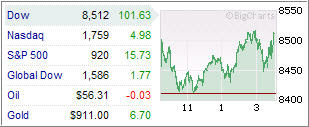 In my last two posts, I talked about investment choices and the importance of using a sell stop discipline.
In my last two posts, I talked about investment choices and the importance of using a sell stop discipline.
When you work with a trailing sell stop, you have to accept the fact that an occasional whip-saw signal will become part of your investment life whether you like it or not.
Taxxcpa had this comment:
A whipsaw possibility is like the cost of insurance. The cost of a couple of whipsaw losses is not too big a price to pay and you should recoup those losses when the trend does not end with a whipsaw and keeps moving up.
Even if this is a bear market rally, there is room for profit if the rally continues until the next sell signal is at a higher level than when the buy signal occurred.
That’s exactly my point. In most areas of your life, you have insurance in place to cover catastrophic events. You pay for this peace of mind whether these events occur or not.
The equivalent in investing is the small cost associated with an occasional whip-saw. However, this requires two things on your part:
1. Have a disciplined investment strategy in place with clearly defined entry and exit points.
2. Check your ego at the door by admitting that an investment decision may have been wrong (or too early) and execute your sell strategy before a small loss turns into a big one.
Millions of investors could have avoided portfolio disaster year, if they had acted on these two simple ideas.
History tends to repeat itself. If you did not heed these warnings last year and paid the price for ignorance, make sure that you are better prepared next time the bear makes an appearance.






